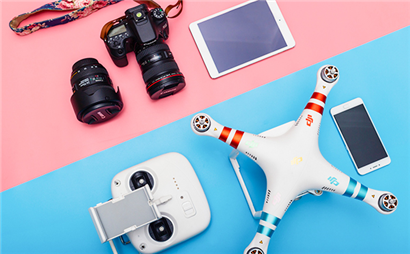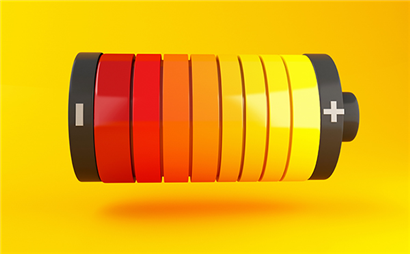Customer Service:
+86 0769 8269 8200
Reprinted from: Global UAV Network
http://libattery.ofweek.com/2015-11/ART-36007-11000-29030057.html
Guide: UAV batteries and mobile phone batteries are lithium batteries, which are the power source of the equipment, and have higher requirements on its safety performance. However, there are differences between the two. Compared with the cell phone battery, the UAV battery has a significant feature - discharge. The UAV battery needs to be discharged to meet the use requirements of the UAV in different environments.
The battery is one of the key factors to ensure the normal takeoff of the UAV. How to increase its service life is a problem worth pondering by every UAV owner.
According to the insiders, both UAV batteries and mobile phone batteries are lithium batteries, which are the power source of the equipment and require higher safety performance. However, there are differences between the two. Compared with the cell phone battery, the UAV battery has a significant feature - discharge. The UAV battery needs to be discharged in order to meet the use requirements of the UAV in different environments. For example, if a strong wind is encountered during aerial photography, the battery needs to be able to discharge at a high current to make corresponding compensation to ensure the position of the UAV. The battery life of UAV is relatively short due to different use requirements.
The insiders also put forward several practical suggestions for lithium battery users:
1、 But put
The discharge curve of the battery shows that the voltage drops rapidly at the beginning of discharge, but the voltage drops slowly when the discharge reaches 3.9~3.7 V. However, once the voltage drops to 3.7V, the speed of voltage drop will be accelerated, and poor control will lead to over discharge, which may damage the battery, or cause explosion if the voltage is too low. Some mold friends will overdischarge each time because they have few batteries. Such batteries are very short-lived. The strategy is to fly as little as possible for one minute, and the life will fly for one more cycle. It is better to buy two more batteries than to fly the battery to the capacity limit every time. Make full use of the battery alarm. Once the alarm is given, it should be lowered as soon as possible.

2、 But charge
1. Use a special charger. This charger can be a lithium ion or lithium polymer charger, which are very close to each other. Some mobile phone chargers can be used to charge lithium polymer batteries. This will not damage the battery.
2. Accurately set the number of cells of the battery pack. In the first few minutes of charging, you must carefully observe the display screen of the charger, which will show the number of batteries in the battery pack. If you are not clear, you should not charge or use the charger you are familiar with.
3. Charge a new lithium battery pack for the first time, check the voltage of each cell of the battery pack, and do the same for every 10 times of charging and discharging. This is absolutely necessary. A battery pack with unbalanced voltage will still burst when the number of batteries is correctly selected for charging. If the voltage difference between cells in the battery pack exceeds 0.1 V, you should charge each cell to 4.2 V to make it equal. If the voltage difference of the battery cell exceeds 0.1 V after each discharge, it means that your battery has failed and should be replaced.
4. Do not charge when nobody is watching
5. Use a safe place to place rechargeable batteries and chargers.
6. Generally, there is no special instructions from the manufacturer, and the charging current should not exceed 1C. Now, batteries that support high current discharge also support charging at a current of more than 1C. However, it will greatly shorten the battery life. It is more cost-effective to buy three batteries for alternate charging than to buy one battery and have to charge quickly.
3、 Unsatisfactory electricity storage
Fully charged batteries cannot be stored at full charge for more than 3 days. If they are not discharged for more than a week, some batteries will directly bulge, and some batteries may not bulge temporarily. However, after several times of full charge storage, the batteries may be directly discarded. Therefore, the correct way is to charge the battery after receiving the flight mission. If there is no flight mission within 3 days after the battery is used, please charge the single chip voltage to 3.80~3.90V for storage. If the battery does not fly due to various reasons after charging, the battery should also be discharged to 3.80~3.90V within 3 days after charging. If the battery is not used within three months, the battery will be charged and discharged once and then stored again to prolong the battery life. The battery shall be stored in a cool and shady environment. When the battery is stored for a long time, it is better to put it in a sealed bag or a sealed explosion chamber. The recommended ambient temperature is 10~25 ° C, and it is dry and free of corrosive gas.
4、 Do not damage the package
The outer packaging of the battery is an important structure to prevent battery explosion and liquid leakage and fire. The damage of the aluminum plastic film of the lithium polymer battery will directly lead to the battery fire or explosion. The battery shall be handled with care. When the battery is fixed on the aircraft, the strap shall be tightened. Because it is possible that the battery will be thrown out due to loose ties during dynamic flight or airplane crash, which is also easy to damage the battery skin.
5、 No short circuit
This often happens during the maintenance and transportation of the battery welding line. Short circuit will directly lead to battery ignition or fire explosion. When it is found that the battery is disconnected after a period of use and needs to be soldered again, pay special attention not to contact the positive and negative electrodes of the battery at the same time. In addition, during the transportation of batteries, the best way is to cover each battery with a self sealing bag separately and place it in an explosion-proof box to prevent short circuit caused by bumps and collisions during the transportation when the positive pole and negative pole of a battery touch other conductive substances at the same time.
6、 Not low temperature
This principle is ignored by many flying friends. Low temperature weather often occurs in the north or high altitude areas. At this time, if the battery is placed outside for a long time, its discharge performance will be greatly reduced. If it has to fly at normal temperature for a long time, there must be a problem. At this time, the alarm voltage should be increased (for example, the alarm voltage of a single chip should be adjusted to 3.8V), because the voltage drop will be very fast in a low temperature environment, and the alarm will drop as soon as it rings. In addition, the battery should be insulated. Before takeoff, the battery should be kept in a warm environment, such as in the house, car, and incubator. Quickly install the battery and perform the flight mission when taking off. When flying at low temperature, try to shorten the time to half of the normal temperature to ensure safe flight.
The insiders also added that when purchasing UAV batteries, people should not choose blindly, but should consider the brand, market heat, performance evaluation and other factors, and consider all factors to choose the battery suitable for their own UAVs.
The UAV industry is a sunrise industry, and the UAV battery industry is also a sunrise industry, with broad prospects for development. Lithium batteries will be more and more suitable for all-round use, safer, more intelligent and more popular in the future development.

Usage and life extension of lithium battery for UAV

Tightness of preventing electric vehicle battery from bulging in summer

Battery Breakthrough: Scientists have built 10 times the capacity of lithium silicon battery

Rechargeable solid state batteries are expected to accelerate the energy collection market

CHY Power Technology supply with one-stop smart energy storage solution,We strive to provide reliable, sustainable and versatile one-stop outdoor and household backup power solutions for millions of homes and communities around the world.

Customer Service:
+86 0769 8269 8200
Add: No. 2 Qinghe Road, Huangjingkeng Village, Huangjiang Town, Dongguan City, Guangdong Province, China
E-mail: peter@aisun-power.com
Copyright © 2022 Dongguan CHY Power Technology Co., Ltd All rights reserved YueICP NO.17160197